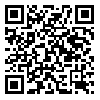BibTeX | RIS | EndNote | Medlars | ProCite | Reference Manager | RefWorks
Send citation to:
URL: http://jdm.tums.ac.ir/article-1-5095-en.html
Background and Aims: Dental implants have been studied for replacement of missing teeth for many years. Productivity of implants is extremely related to the stability and resistance under applied loads and the minimum stress in jaw bone. The purpose of this study was to study numerically the 3D model of implant under thermal loads.
Materials and Methods: Bone and the ITI implant were modeled in “Solidworks” software. To obtain the exact model, the bone was assumed as a linear orthotropic material. The implant system, including implant, abutment, framework and crown were modeled and located in the bone. After importing the model in Abaqus software, the material properties and boundary conditions and loads were applied and after meshing, the model was analyzed. In this analysis, the loads were applied in two steps. In the first step, the mechanical load was applied as tightening torque to the abutment and the abutment was tightened in the implant with 35 N.cm torque. In the second step, the thermal load originated from drinking cold and hot water was applied as thermal flux on the ceramic crown surface in this model.
Results: Thermal analysis results showed that the thermal gradient in the bone was about 5.5 and 4.9 degrees of centigrade in the case of drinking cold and hot water respectively , although the maximum gradient of the whole system was reduced to 14 degrees, which occurred, in the crown by drinking cold water.
Conclusion Thermal stresses were so small and it was because of the low thermal gradient. Maximum stresses occurred in the abutment were due to the tension preloads which were originated from the tightening torque.
Received: 2013/05/5 | Accepted: 2013/12/15 | Published: 2013/12/29
| Rights and Permissions | |
 |
This work is licensed under a Creative Commons Attribution-NonCommercial 4.0 International License. |




